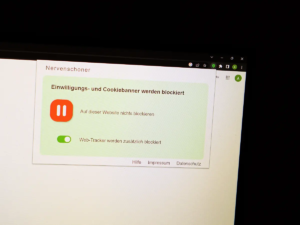Traffic lights have been one of the most important traffic elements for over a century. The reasons for this are obvious. But now it could have had its day in this form. US researchers advocate for a fourth light. This should offer many advantages.

Fourth light in conversation
Red, Yellow, Green. These are the colors that we are used to from a traffic light. But in the future, traffic lights could shine in a new light – in white light. The color doesn’t matter. It’s about the benefit for road users that comes with another light source. And this seems to have been completely convincing in the computer simulations carried out.
FOUR-COLOR TRAFFIC LIGHT: THIS IS BEHIND THE “WHITE PHASE”
The innovative traffic concept , which researchers at North Carolina State University dubbed the “white phase”, involves autonomous vehicles in regulating the flow of traffic. On the one hand, these have numerous sensors, but on the other hand they also communicate with each other or with the traffic light. Furthermore, self-driving cars represent decentralized data centers that can be used to optimize the flow of traffic. None of this is new, and the associated advantages for road traffic are well known. Using a white lamp, however, researchers now want to allow human road users to share in these advantages.
While a red light would still mean “stop” and a green light would signal a free ride, the white light is meant to cause the driver of a non-self-driving vehicle to follow the autonomous vehicle ahead. If this stops, you should also stop. If it drives off, you should also follow this example. That’s it already.
Simulations showed that in this way the time required to go through intersections is “significantly” reduced and fuel consumption is reduced. The concept involves human drivers in the coordinated movements of the autonomous vehicles, thereby enabling more efficient progress. However, only if there are enough self-driving vehicles at the intersection. Otherwise, the white traffic light will not be switched on or the degree of efficiency will fall.
Larger gains in time and fuel arise with shares above 30 percent. The general benefits start much earlier: “If, for example, ten percent of the vehicles are autonomous, the delays are reduced by three percent,” says Ali Hajbabaie, associate professor at North Carolina State University. “If 30 percent of vehicles are autonomous, delays will be reduced by 10.7 percent.”
NOT FOR YEARS TO COME
A first white phase concept already saw the light of day in 2020, but this was based on a centralized approach. Autonomous vehicles transmit data to a central computing point, which takes over control of the cars and the traffic lights. The new edition of the model is meanwhile based on a decentralized solution. This is more efficient and less susceptible to communication failures.
As convincing as the merits of the concept may be, it will probably be a while before the traffic lights turn white. On the one hand, this requires a corresponding expansion of the infrastructure. On the other hand, the white phase requires a much higher proportion of autonomous vehicles on the road.


